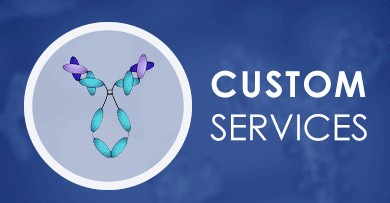 Loading...
Loading...

KLRD1
 Loading...
Loading...Anti-KLRD1 Products
-
- Derivation: Mouse
- Species Reactivity: Human
- Type: Mouse IgG1, κ
- Application: WB, ELISA, FC
-
- Species Reactivity: Human
- Application: ELISA, FC, WB
- Recombinant Mouse Anti-KLRD1 Antibody (CBL327) (NEUT-1659CQ)
-
- Species Reactivity: Human
- Type: IgG1
- Application: BL, FC, CyTOF
-
- Species Reactivity: Human
- Type: Mouse IgG1
- Application: FC, FuncS
-
- Species Reactivity: Human
- Type: Mouse IgG
- Application: WB, ELISA
-
- Species Reactivity: Human
- Type: Mouse IgG1
-
- Species Reactivity: Human
- Type: Mouse IgG1
-
- Species Reactivity: Human
- Type: Mouse IgG1
- Application: ELISA, WB, FC
-
- Species Reactivity: Human
- Type: Mouse IgG1
- Application: ELISA, WB, FC
-
- Species Reactivity: Human
- Type: Mouse IgG1
-
- Species Reactivity: Human
- Type: Mouse IgG1
- Application: FC, IF
-
- Derivation: Mouse
- Species Reactivity: Human
- Type: Mouse IgG1, κ
- Application: IF, FC
- CytoStream™ Rat Anti-KLRD1 Recombinant Antibody (clone 18d3) (VS-0225-XY156)
-
- Species Reactivity: Mouse
- Type: Rat IgG2a, kappa
- Application: FC
- Mouse Anti-KLRD1 Monoclonal Antibody (VS7-0425-WR239) (VS7-0425-WR239)
-
- Species Reactivity: Human
- Type: Mouse IgG
- Application: WB, FC, ELISA
- Anti-KLRD1 Immunohistochemistry Kit (VS-0525-XY3815)
-
- Species Reactivity: Human
- Target: KLRD1
- Application: IHC
Can't find the products you're looking for? Try to filter in the left sidebar.Filter By Tag
Our customer service representatives are available 24 hours a day, from Monday to Sunday. Contact Us
For Research Use Only. Not For Clinical Use.
Background
CD markers
Intracellular, Membrane (different isoforms)
Cell type enhanced (NK-cells, dendritic cells, T-cells)
Group enriched (NK-cell, gdT-cell, naive CD8 T-cell, memory CD8 T-cell)
Low cell line specificity
Can form disulfide-bonded heterodimer with NKG2 family members KLRC1 and KLRC2 (PubMed:18083576, PubMed:18332182, PubMed:18448674, PubMed:9655483). KLRD1-KLRC1 heterodimer interacts with peptide-bound HLA-E-B2M heterotrimeric complex. KLRD1 plays a prominent role in directly interacting with HLA-E (PubMed:18083576). KLRD1-KLRC1 interacts with much higher affinity with peptide-bound HLA-E-B2M than KLRD1-KLRC2 (PubMed:9486650, PubMed:10428963). Interacts with the adapter protein TYROBP/DAP12; this interaction is required for cell surface expression and cell activation (PubMed:9655483, PubMed:15940674).
Receptor

